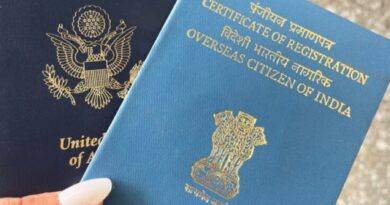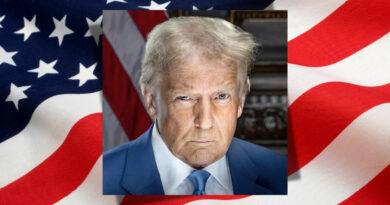Indian Elections Now: Effects On The Bay Area
The Bay Area Is Already Feeling The Effects Of The Indian Election 2024. The election season in India commenced on April 19, showcasing the country’s vibrant democracy. Over the course of 44 days, voters will exercise their democratic rights by casting their ballots, with the eagerly anticipated results set to be unveiled on June 4.
Prime Minister Narendra Modi’s ruling Bharatiya Janata Party (BJP) wants to hold onto power in India’s Parliament, but the opposition parties are determined to overthrow the BJP’s ten-year rule.
The Indian election is a major event that impacts a substantial portion of the world’s population. Discussions about this election have likely been ongoing among Indians and Indian Americans in the Bay Area for a considerable period. It seems that the WhatsApp family group chats are getting a boost of energy with the addition of videos featuring passionate TV pundits. Maybe your aunt and uncle are trying to engage you in conversations about policies.
Are you curious about India’s elections’ inner workings and the stakes involved?
Continue reading to understand the significance of this election for India and the unique role the diaspora plays.
- Can you explain how the election process works?
- Why is this significant?
- What are the current topics of discussion?
- What impact does the election have on the Indian and Indian American communities in the United States?
- I currently reside in the United States, but I was born and raised in India. Can voters cast their votes from locations outside of India?
What is the process for the upcoming 2024 election in India?
Unlike the United States, India takes a different approach to its elections, spreading them out over several weeks to make sure that voting is convenient for its large population.
The upcoming general election is expected to last for a duration of six weeks, starting on April 19 and concluding with the announcement of results on June 4. Voters will choose 543 members to serve a five-year term in the lower house of Parliament.
There will be voting at more than a million polling stations throughout the seven phases of the elections. Each phase will span only one day, during which a multitude of constituencies from various states will exercise their right to vote. The staggered polling system enables the government to strategically mobilise a significant number of troops to ensure security and facilitate the smooth movement of election officials and voting machines.
In India, the electoral system follows a first-past-the-post multiparty approach, where the candidate who secures the highest number of votes wins the election. To secure a majority, a party or coalition must surpass the threshold of 272 seats.
In India’s upcoming 2024 election, it is crucial to identify the key stakeholder groups that hold significant influence. Understanding the major players in this political landscape is critical to comprehending the dynamics at play. Examining the various stakeholders involved can provide valuable insights into the potential outcomes and impacts of this highly anticipated electoral event.
The Modi-led Bharatiya Janata Party and the Rahul Gandhi-led Indian National Congress dominate Parliament. The opposition bloc includes several other noteworthy regional parties.
A coalition of opposition parties, known as the Indian National Developmental Inclusive Alliance (INDIA), has come together with the aim of preventing Modi from securing a third consecutive election victory.
In most constituencies, the alliance has presented only one primary candidate. Ideological divisions and personality clashes have marred the political landscape, resulting in the absence of a selected candidate for the prime minister position.
According to multiple surveys, it appears that Modi is on track to secure a victory by a significant margin, especially after his recent inauguration of a Hindu temple in Ayodhya. His party has long promised to advance Hindu nationalism, and now this move has fulfilled that promise.
If Modi secures another victory, it will further strengthen his position as one of the nation’s most revered and influential leaders. Following a resounding victory in 2019, the BJP secured an overwhelming majority by winning 303 parliamentary seats. Only 52 seats were won by the Congress party.
What does this mean for India?
As Prime Minister Modi, known for his Hindu nationalist views, prepares to face off against a diverse INDIA coalition that is making determined efforts to close the gap, the upcoming general election in India has generated significant excitement.
In 2014, Modi, then 73 years old, ascended to power by highlighting his dedication to economic progress and presenting himself as a reformer with a strong resolve to combat corruption. Ever since, he has skillfully intertwined religion and politics, gaining widespread support from the Hindu majority in the nation.
During Prime Minister Modi’s tenure, India has seen remarkable growth on the global stage. During his time in office, he has faced a range of allegations and challenges, including rising unemployment rates, incidents of violence against minority groups, particularly Muslims and Christians, limited opportunities for expressing dissent, and the need to uphold free media.
Many Indian residents in the Bay Area share a common concern. Mahadevan Nair, an entrepreneur based in Sunnyvale, believes that the outcome of the vote carries great importance for the future of India. Nair expressed concern about India’s potential shift to an autocratic regime under Modi’s leadership.
Arunima, a fellow at Stanford, expressed similar sentiments. “This is a critical juncture for India.” The upcoming elections are of great significance. She stated her conviction that the choices made will have a profound impact on the future of India.
What are the key issues at stake in the Indian election?
India’s commitment to democracy has been unwavering, as demonstrated through its free elections, impartial judiciary, vibrant media, robust opposition, and smooth transfers of power. Some argue that Modi’s 10-year tenure has gradually eroded certain credentials, making the upcoming elections a crucial test of the nation’s democratic principles.
Many watchdogs now frequently classify India as a “hybrid regime” because it balances between being a full democracy and a full autocracy.
The upcoming polls will serve as a crucial test for Modi, a charismatic leader whose tenure has witnessed a surge in targeted acts against certain religious communities, most notably Muslims. He has been the subject of criticism for allegedly favouring Hindu interests, with concerns raised about the potential impact on the country’s secular foundation.
There seems to be a repetition of zeros in the provided text.
During Modi’s tenure, the media landscape has undergone significant changes, characterised by a decline in autonomy and a decrease in dissenting opinions. Modi has consistently emerged victorious in a multitude of crucial court cases. The concentration of executive power has strained India’s federalism. Top opposition leaders have been facing corruption cases, despite their repeated denials, according to federal agencies.
India’s economy is experiencing rapid growth, making it a noteworthy factor to take into account. India’s emergence on the global stage has solidified its status as a major player, providing a counterweight to China’s growing dominance. Despite India’s remarkable growth, the Modi government has encountered difficulties in generating adequate employment opportunities for the youth. In an effort to secure voter support, they have resorted to implementing welfare initiatives like free food and housing.
The U.N.’s most recent Asia-Pacific Human Development Report identified India as one of the countries grappling with notable disparities in income and wealth.
For Indian communities in California, the outcome of the country’s election holds great importance.
Numerous South and East Bay neighbourhoods are home to a large number of Indian immigrants, showcasing the rich cultural diversity that characterizes the Bay Area. India has seen a significant rise in its immigrant population, making it the largest group in Santa Clara and Alameda, the two largest counties in the region. In addition, the Bay Area has become a magnet for a multitude of accomplished individuals of Indian heritage who have made significant strides in their respective domains. Notable individuals in this group include Sundar Pichai, the CEO of Alphabet; Shantanu Narayen, the CEO of Adobe; and Vice President Kamala Harris, who hails from Oakland. Indian and Indian American organizers have had a long-lasting impact on the history of the Bay Area.
Investigating the Influence of South Asian Activism in the Bay Area
Indians who live overseas wield considerable economic power in India. In 2020, Indian residents in the United States made an impressive contribution of $125 billion to India through remittances, representing around 3.3% of the Indian GDP.
Arunima saw the birth in the Bay Area of conflicting Indian narratives. “The Indian diaspora exhibits a similar level of fragmentation as the population within India,” she said.
She suggests that people’s perceptions of India can differ depending on the sources of information they rely on. She claims that individuals’ interpretation of information differs based on their consumption of mainstream media or reliance on non-mainstream digital outlets.
Revathi Nathan, a resident of the Bay Area for the past eight years, voiced her admiration for Modi. In a confident statement, she proudly proclaimed, “I personally identify as a member of the queer community and as a person of colour.” There is a perception that the LGBTQ community has painted the BJP in a negative light, suggesting that the party is unsupportive of their cause. In 2018, she provided an explanation regarding the BJP government’s decision to abolish Article 377, a law that previously criminalised consensual homosexual acts. In 2013, the Indian National Congress Party reinstated Article 377.
She mentioned her intention to go back to India in order to vote, but she’s unsure if she’ll be able to make it happen.
I am an Indian national who currently resides in the United States. Is there still eligibility for me to vote in the election?
Non-resident Indians living in the United States for work or education, without citizenship in any other nation, can register to vote by providing the address on their Indian passport.
However, it is important for individuals to personally visit their assigned polling station in India to cast their votes. Unfortunately, voting by mail or remotely from a different location is not available.




